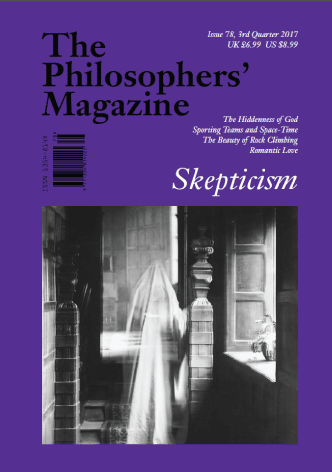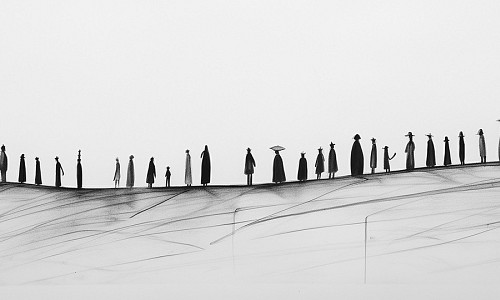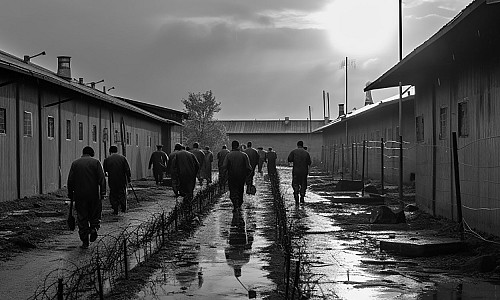A simple Q&A about the biology of race
The controversy of the concept of “race” in humans is always a live one, and I have commented on the topic before. I have, for instance, discussed the famous Stephen Jay Gould vs Samuel George Morton controversy, as well as a wonderfully clear headed paper by Jonathan Kaplan and Rasmus Grønfeldt Winther on “Realism, Antirealism, and Conventionalism about Race.”
Here I return to the topic by republishing a short paper I co-wrote with my colleague and long time friend Guido Barbujani (University of Ferrara, Italy), which originally appeared in Current Biology 23:185-187 (2013). I think our thoughts are still valid and may be useful to people interested in the never ending controversy.
The paper is organized as a series of short questions and answers about race, to which a biologist (Guido) and a philosopher-biologist (yours truly) provide some preliminary answers. Here it goes:
What is a race?
Ernst Mayr (1904–2005) distinguishes between species in which biological change is continuous in space, and species in which groups of populations with different character combinations are separated by borders. In the latter species, the entities separated by borders are geographic races or subspecies. Many anthropology textbooks describe human races as discrete (or nearly discrete) clusters of individuals, geographically localized, each of which shares a set of ancestors, and hence can be distinguished from other races by their common gene pool or by different alleles xed in each.
Isn’t that concept elusive?
Somewhat. Ever since Lamarck and Darwin, species are no longer regarded as fixed entities; in time, some of them split and evolve into different species. Accordingly, races are often conceptualized as populations of the same species on their way to speciation, but not quite there yet, a rather difficult category to place individuals in. Also, whether geographic variation is continuous or discontinuous may not be obvious. That said, philosophers of science recognize that concepts without sharp boundaries may still be useful in everyday as much as in scientific practice.
So, maybe the concept is elusive in principle, but it works in practice?
Yes, in some species, such as some snails or the gorilla, not to mention a number of plant species. Conversely, highly mobile species, including many birds and marine shes, do not tend to show geographic clusters of individuals which can be distinguished morphologically or genetically.
What about humans, then?
As you may have guessed, opinions differ among experts. Some believe not only that humans are subdivided in biological races, but also that inherited differences between races result in a range of different abilities (including cognitive abilities). By contrast, others regard human races as entirely cultural constructs unrelated with biological diversity. There are intermediate possibilities too.
Why then is the concept of race so widespread?
The idea that races are a natural feature of human diversity has long been the standard for anthropological research. However, scientists trying to list the human races never reached an agreement, and catalogs proposed since the 18th century contain anything between 2 and 200 races. In time, this led to questioning the meaningfulness of racial classification, so that in 1963 Frank Livingstone (1928–2005) wrote: “There are no races, there are only clines” (i.e., geographical gradients). Others disagreed. While stating that universal human rights do not derive from our being identical, but from being all humans, Theodosius Dobzhansky (1900–1975) admitted that human races are poorly defined, but maintained that they exist and predicted they would be better described in the future. The good news is that now Dobzhansky’s future has arrived.
So, what do we know now?
With a population size exceeding seven billion, humans would be expected to display a large amount of genetic variation. This is not the case, however, suggesting that population sizes were small throughout much of human history. Genetic diversity is highest in Africa and decreases as one moves away from there, probably reflecting repeated founder effects that occurred as anatomically modern humans dispersed into other continents. As a result, most human alleles have a cosmopolitan distribution, that is, they are present in all continents, at different frequencies. Combinations of alleles along the same chromosome, or haplotypes, have a clearer geographical distribution, but still only a minority of them is continent-specific. Some regions of the genome show evidence of local adaptation. Studies of ancient DNA suggest that perhaps there may have also been limited admixture with archaic humans, such as Neanderthals.
What does this imply for the existence of human races?
Basically, that people with similar genetic features can be found in distant places, and that each local population contains a vast array of genotypes. Among the first genomes completely typed were those of James Watson and Craig Venter, two U.S. geneticists of European origin; they share more alleles with Seong-Jin Kim, a Korean scientist (1,824,482 and 1,736,340, respectively) than with each other (1,715,851). This does not mean that two random Europeans are expected to be genetically closer to Koreans than to each other, but certainly highlights the coarseness of racial categorizations. On average, nearby populations tend to resemble each other more than distant ones, but individual members of the same population, Watson and Venter in this case, can be very different. In short, if races are defined as subspecies, there is no such thing in humans. The best way to know what is in a person’s DNA is to study that person’s DNA.
So, my dog has a race and I don’t?
Human populations are also less diversified than dog or horse breeds, but the comparison is misleading, because stocks in these species were selected by human breeding programs.
Are we all equal, then?
No, we all differ genetically from one another, with the exception of identical twins. Tens of millions of the 3 billion nucleotides of our (haploid) genome have been shown to vary, and this number is increasing, as more and more genomes are being typed. Still, in comparison with other primates, we are very homogeneous, with two random members of our species differing, on average, in 1 nucleotide out of 1,000.
But isn’t it possible to classify people just based on their skin color?
Hardly. With at least 70 genes involved, skin color is a complex trait and a poor indicator of shared ancestry. Because pigmentation evolved under selective pressure, people of sub-Saharan Africa, Southern India, Australia and Melanesia have all dark skins, despite these populations occurring in distant branches of evolutionary trees based on genetic distances.
What about ‘folk’ or ‘common’ concepts of race?
The level of disagreement is the same as in scientific studies. In U.S. census forms, for instance, the number of races changed almost every decade (12 in 1960, 6 in 2000, 15 in 2010), and people from different cultures classify people in different ways. Just as an example, in apartheid South Africa, Japanese were regarded as white and Chinese as colored, even though both populations include people with light and rather dark skin.
Can we not just say that races are populations between which there are genetic differences?
This definition has actually been proposed, but it has a disadvantage. Any two human populations differ genetically to some extent, and so each of them would be labeled as a race, in contrast with current taxonomic practice. But there is more; any pair of human groups, even when defined socially (say, dentists vs. plumbers), or arbitrarily (say, those who wore black shoes vs. those who wore shoes of other colors on June 8th, 2010) will differ in the average of many biological properties, say body weight, speed in running, ability to digest milk or sensitivity to bitter flavors. However, this does not mean that a person’s weight or ability to digest milk has anything to do with that person choosing plumbing or dentistry. The crucial question is not whether we are identical (we are not) but whether humans are like cell phones, which can be Nokia, Samsung or Motorola, but hardly anything in between, in which case the different human brands could legitimately be called races. The answer is no.
Isn’t all this a problem of terminology and good manners, rather than a scientific one?
No, assuming that humans come in neat racial packages leads to poor scientific inference. Consider pharmacogenomics: genetic differences determine individual tendencies to metabolize various classes of drugs rapidly, normally or slowly. This often results in slow metabolizers suffering from side effects due to the prolonged interaction between the drug and its biological target, and in fast metabolizers having little or no benefit from treatment. Huge amounts of money have been invested to develop drug dosages specific for, say, the Chinese or the Swedish market. However, here, market really means race; these projects might have worked only if most Chinese had the same metabolizing phenotype, and most Swedes a different phenotype. On the contrary, it has been shown that Chinese and Swedes differ in their average metabolizing rate for debrisoquine and codeine, but both populations comprise the full range of fast, normal, and slow metabolizers. Racial pharmacology appears to be a blind scienti c alley, whereas in time we may be able to develop personalized pharmaceutical treatment.
Is it wrong if I use the word race?
Under freedom of speech, anybody is free to use any words. Even if they do not correspond to scientifically identifiable entities, races are a component of our psychological and social world, and as such their importance should not be dismissed. But mutual understanding requires some agreement between speakers and receivers, and so it is better to avoid terms of ambiguous or unclear meaning, especially in science.
Where can I find out more?
Ahn, S.M., Kim, T.H., Lee, S., Kim, D., Ghang, H., Kim, D.S., Kim, B.C., Kim, S.Y., Kim, W.Y., Kim, C., et al. (2009). The rst Korean genome sequence and analysis: full genome sequencing for a socio-ethnic group. Genome Res. 19, 1622–1629.
Barbujani, G., and Colonna, V. (2010). Human genome diversity: Frequently asked questions. Trends Genet. 26, 285–295.
Harpending, H., and Rogers, A. (2000). Genetic perspectives on human origins and differentiation. Annu. Rev. Genomics Hum. Genet. 1, 361–385.
Hunley, K.L., Healy, M.E., and Long, J.C. (2009). The global pattern of gene identity variation reveals a history of long-range migrations, bottlenecks, and local mate exchange: implications for biological race. Am. J. Phys. Anthropol. 139, 35–46.
Jakobsson, M., Scholz, S.W., Scheet, P., Gibbs, J.R., VanLiere, J.M., Fung, H.C., Szpiech, Z.A., Degnan, J.H., Wang, K., Guerreiro, R., et al. (2008). Genotype, haplotype and copy-number variation in worldwide human populations. Nature 451, 998–1003.
Johansson, I., Yue, Q.Y., Dahl, M.L., Heim, M., Säwe, J., Bertilsson, L., Meyer, U.A., Sjöqvist, F. and Ingelman-Sundberg, M. (1991). Genetic analysis of the interethnic difference between Chinese and Caucasians in the polymorphic metabolism of debrisoquine and codeine. Eur. J. Clin. Pharmacol. 40, 553–556.
Jorde, L.B. (2008). Human genetic diversity. In: Encyclopedia of Life Sciences (ELS). (Chichester: John Wiley & Sons). DOI: 10.1002/9780470015902.a0005079.pub2.
Kaessmann, H., Wiebe, V., Weiss, G., and Pääbo, S. (2001). Great ape DNA sequences reveal a reduced diversity and an expansion in humans. Nat. Genet. 27, 155–156.
Krimsky, S. and Sloan, K., editors (2011). Race and the Genetic Revolution (New York: Columbia University Press).
Livingstone, F. B. (1962). On the nonexistence of human races. Curr. Anthropol. 3, 279–281.
Mayr, E. (1947). Systematics and the Origin of Species, 3rd edn. (New York: Columbia University Press).
Pigliucci, M. and Kaplan, J. (2003). On the concept of biological race and its applicability to humans. Philosophy Sci. 70, 1161–1172.
Tishkoff S.A. and Kidd, K.K. (2004). Implications of biogeography of human populations for ‘race’ and medicine. Nat. Genet. 36(11 Suppl.), S21–S27.
Massimo Pigliucci is the K. D. Irani Professor of Philosophy at the City College of New York. His background is in evolutionary biology and the philosophy os science, though he has recently developed a keen interest in Stoicism. His most recent book (co-edited with Maarten Boudry) is Philosophy of Pseudoscience: Reconsidering the Demarcation Problem. His other writings can be found at Plato's Footnote.
You might also like...

Subscribe to The Philosophers' Magazine for exclusive content and access to 20 years of back issues.








